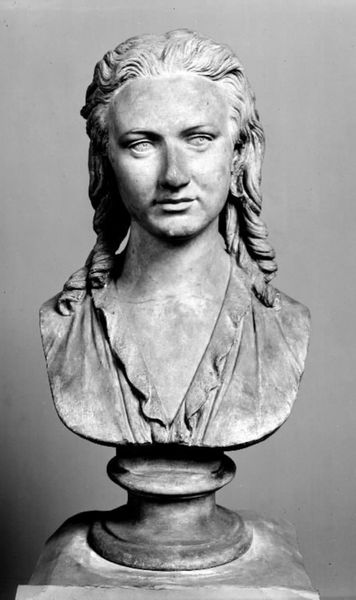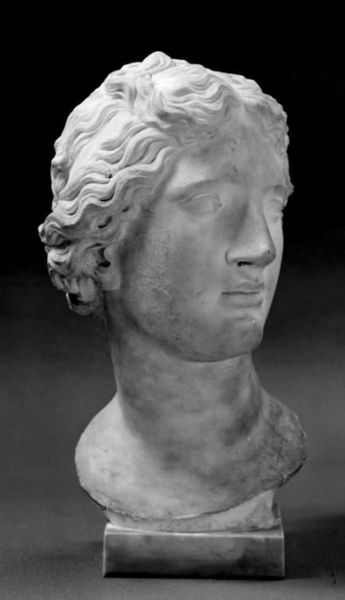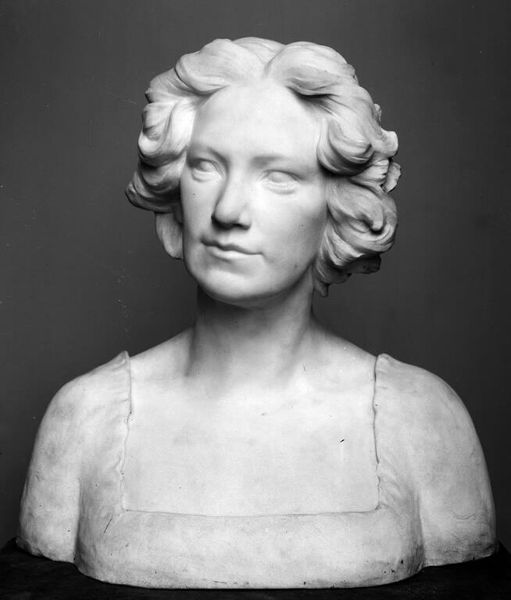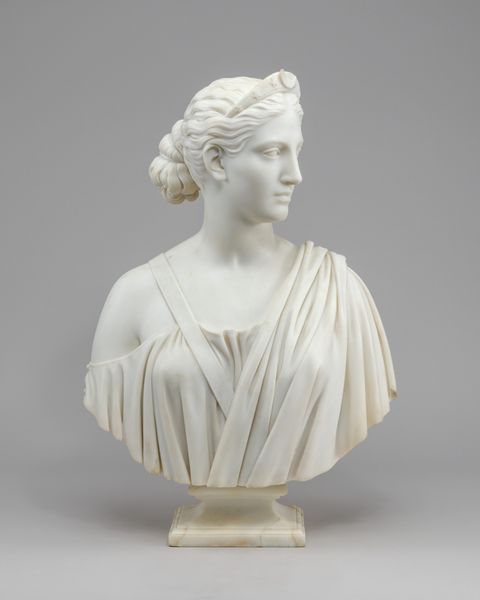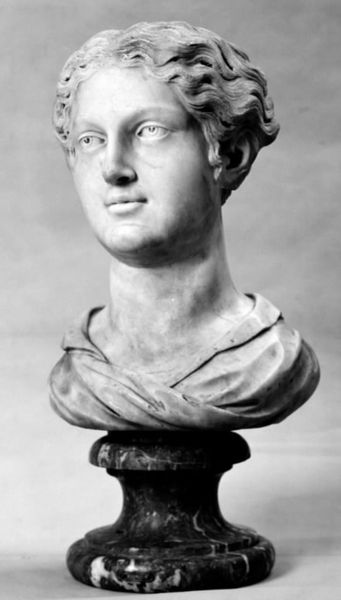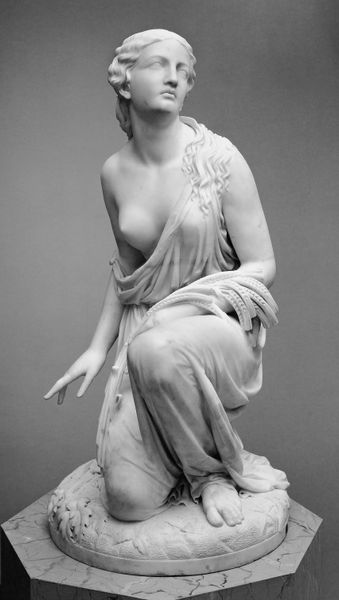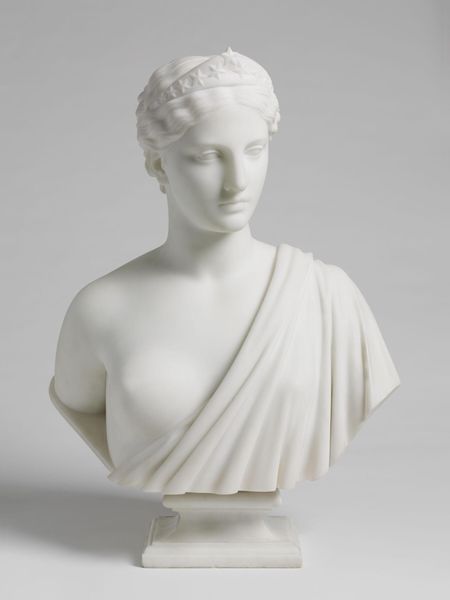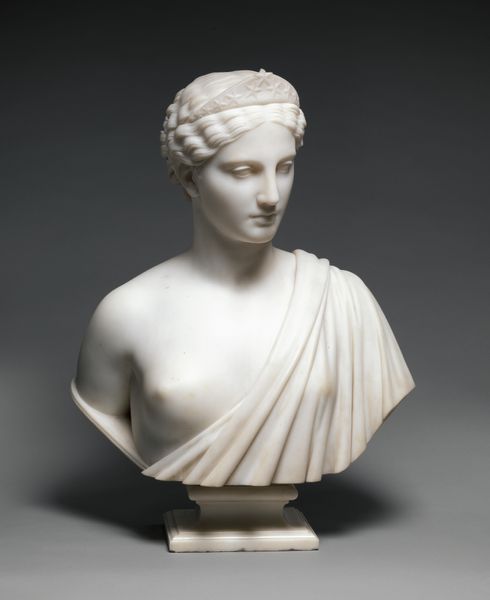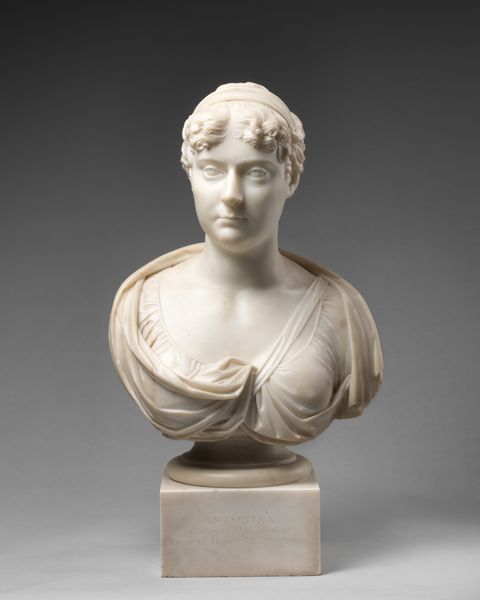
Dimensions: 66 cm (height) (Netto)
Editor: This marble sculpture, created in 1863 by H.W. Bissen, depicts Queen Louise of Denmark. What immediately strikes me is its rather stoic and somewhat cold demeanor, especially when you consider it's a portrait meant to honor royalty. What can you tell me about it? Curator: That perceived coldness speaks volumes, doesn’t it? In the mid-19th century, neoclassicism still held significant sway. Royal portraits in sculpture served less as intimate glimpses into personality and more as assertions of power, legitimacy, and connection to the lineage of empires past. Consider the political climate; Denmark was in a period of nation-building, trying to solidify its identity. Editor: So, the style served a political function? Curator: Absolutely. Academic art, particularly portraiture, operated as a form of propaganda. Bissen, a prominent sculptor of his time, consciously uses this classical language to ennoble Queen Louise and, by extension, the Danish monarchy itself. It's less about individual likeness and more about projecting an image of unwavering authority. How do you think the public received such imagery at that time? Editor: I imagine it would reinforce the established social order, legitimizing the Queen’s position. Almost like a carefully staged photo op of the time, meant for widespread consumption and reinforcing ideals. I never thought about art in this period as staged with this goal! Curator: Precisely. And, the display of the sculpture itself within the museum further reinforces these messages. Public art serves a public function; this piece reminds us of how even seemingly neutral representations can participate in power dynamics and ideological reinforcement. Editor: It's fascinating how historical context completely reshapes my understanding. It adds a whole other layer to simply appreciating its aesthetics or skill! Thank you! Curator: Indeed. Thinking about the ‘why’ and ‘where’ art exists truly enriches our engagement with it.
Comments
No comments
Be the first to comment and join the conversation on the ultimate creative platform.
